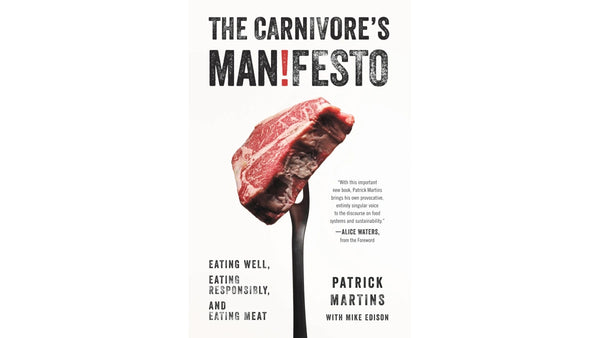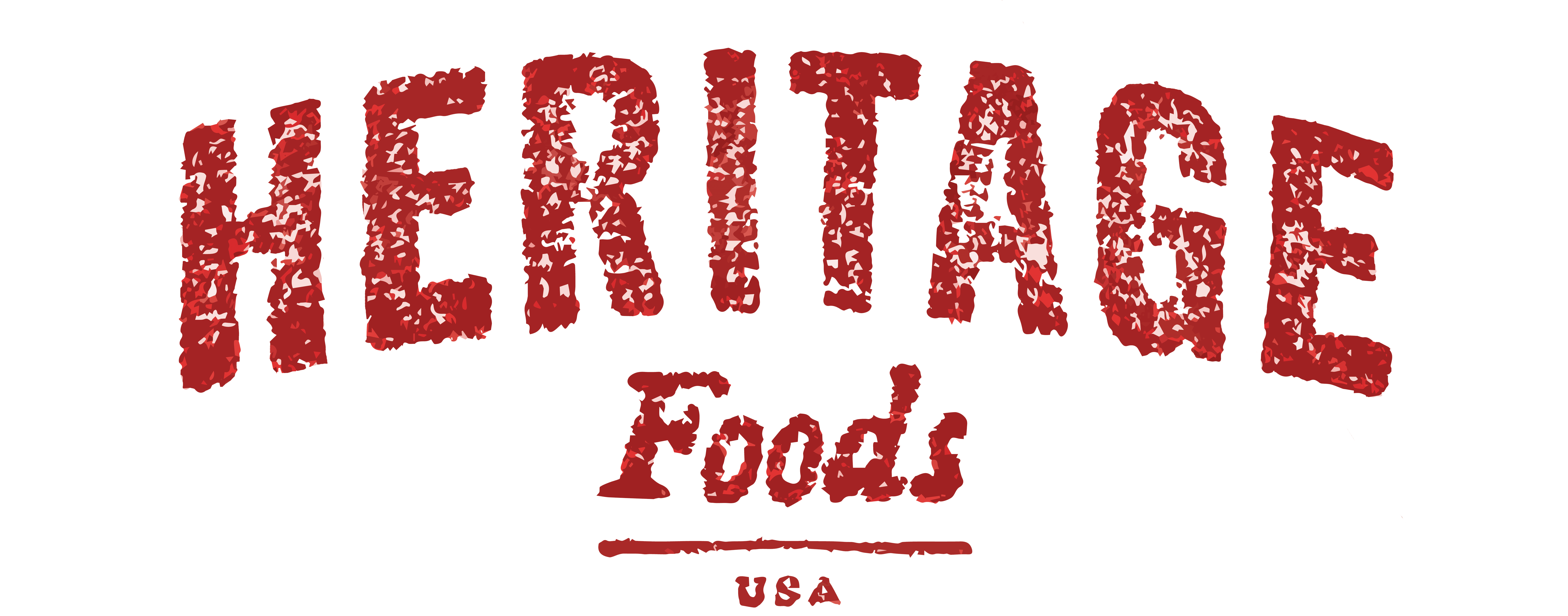
Sex Sells, or, For Every Season There Is a Meat
In winter, about the time when the first snow falls, my dinners feature American lamb and come from a breed that is covered in thick, dense wool. The lanolin from wool makes for bites that stand up to the cold harsh winds of the Atlantic. When temperatures dip below freezing and nothing grows, the only winged creatures that I crave are the ones that can stand up to the harsh weather conditions– red meat waterfowl. Plumage protects ducks and geese right up to the moment the lakes and ponds freeze over. Duck and goose meat is the dark chocolate of the protein world.
For us winter is a time for Batali Salumi and aged hams, and NY strip cedes it top spot to the fattier ribeye and bison burgers give way for more marbled meat like Akaushi and the Belted Galloway.
Eating particular meats at certain times of year is the best way to maximize the gustatory pleasures of the seasons, and it is also the best way to support a sustainable agriculture system.
Just as we enjoy hardy root vegetables in fall and ripe red tomatoes during the summer, every animal also enjoys their own natural season. Bellow is a chapter from my book The Carnivores Manifesto. Learn why turkey is served for thanksgiving and how goose made its name during Christmas and look forward to the rich new bounty that lies just ahead.
Patrick Martins
Founder, Heritage Foods USA
Chapter 25
Sex Sells, or, For Every Season
There Is a Meat
Live in each season as it passes; breathe the air, drink the drink, taste the fruit, and resign yourself to the influence of the earth.
— Henry David Thoreau
An industrial farm is a joyless place. Even the studly breeders don’t get to have sex! Everything is artificially coerced, and then artificially inseminated. These farms are not idyllic, impressionist paintings of greenery and sunshine—more like the technological nightmare of tubes and machines and vaultlike freezers, racks of test tubes, genetic manipulators, and the coldhearted tools of a science on the brink of disaster.
Did you ever read Charles Dickens and wonder why they were always eating ducks and geese at Christmastime? Well, it’s because of the sex lives of these toothsome birds. It’s that simple. Remember the song “Makin’ Whoopee”? Another season, another reason, for makin’ whoopee. You certainly didn’t think that applied only to people, did you?
Just as tomatoes and strawberries are best in the summer, so too do our animal chums have their own seasons, and being tuned in helps teach us respect for the natural order of things— the miracle of Earth orbiting the Sun and giving us the joys of spring, summer, winter, and fall. These days it’s not so obvious, in the supermarket, anyway, because all meat is available all the time. But when naturally bred animals are ready for slaughter, in season, that is Earth speaking to us.
Eating meat at its naturally most robust, ready-for-market time of year is part of our covenant as responsible, sustainable, thoughtful, spiritually sound human beings, and it’s humbling in a way that makes us all feel part of something much bigger than us.
And when the season strikes, buy these animals in bulk and freeze what you don’t eat fresh — to embrace livestock by season means more than just laying out a single lavish holiday meal. You can make it your fashionable protein for weeks. Think sandwiches, and then meat for chili or ragù for your pasta. Almost any animal, including lamb and turkey, makes a great burger, and this is very important— when we only eat prime cuts, it leads to waste. Grinding the cheaper cuts is going to help us achieve an America where small farms can survive, because we are helping them sell the entire beast.
Let’s start in fall: In October farms all over the world are exploding— this is harvest season, when the spring’s efforts are ready for the table and it’s time for us to fatten up for the winter. But at Heritage we’re most excited about October’s bounty of goats— in fact, we call it Goatober.
Goat is consumed in more places on the planet than any other livestock, with wonderful recipes and traditions representing a mosaic of cultures, although in America it suffers from the lack of a good marketing scheme— no “Where’s the beef?” or “the other white meat” to push goat to the forefront of a carnivore’s cuisine that has always been dependent on cows and pigs.
Goats are like horny newlyweds down on the farm. They do it like crazy in the fall, and they reproduce easily, usually birthing twins in spring. When fall comes, you either eat them, especially the males that do not produce milk, or you’ll have to get them sleeping bags to get through the chilly evenings. They’ve spent their summers munching on green grass and by early fall they are at their peak, before they get too old, tough, and gamey. In
November, don’t be a turkey, eat one! Left to their own instincts, turkeys do it in the late winter and early spring and are ready for harvest in twenty-four weeks, which conveniently turns out to be Thanksgiving, when as a species, they want to be eaten. And that is why the tradition exists. But don’t leave it there— you could be eating turkey sandwiches and beautiful turkey breasts and drumsticks right through till Christmas, and don’t forget the ground turkey for burgers or chili. We’ve said it before and we’ll say it again, ground meat is what keeps America’s independent farmers business.
Today, of course, turkey sandwiches are everywhere all year round, but nature pushed hard to put that bird on the Pilgrims’ table. If you are eating a fresh turkey in July, well, you can bet that turkey was not the product of a satisfying sexual experience— there wasn’t a tom anywhere near a female when that bird was conceived.
December is Dickensian and, once again, the time for ducks and geese. For Americans, they may seem a bit Old World and intimidating to cook, but the truth is they are no more difficult to prepare than a chicken or a turkey, and they are an incredibly tasty alternative. Stephen Barber, the chef at Farmstead restaurant in Napa, calls geese “rib eye in the sky” because they are that meaty and wonderful.
January and February are great times to enjoy cured meats, salumi, prosciutto, that has been salted and preserved. Why? Because as humans became civilized, this is what we created to survive the winter. Winter is tough—it’s why squirrels hoarding nuts set such an apt example for the rest of us. It’s why bears hibernate. Winter is about survival. And if the winter lasts into March, you can still gnaw on that prosciutto.
Come spring, when March roars in like a lion, you should be tucking into some lamb. There is a reason that lamb is central to Passover and Easter— or did you think it was just convenient symbolism? Nope, that’s when young lambs are ready for the slaughter, based on their natural mating patterns. And it’s a good time to eat the older, more mature sheep, too, since they are done breeding or milking and are ready for harvest.
Again, buy in bulk: Many of the country’s best lamb and goat farms are not at the level yet where they can break up those animals into pieces and still keep their business viable. Buying a twenty-pound half lamb or goat, butchered to your specs, is the only way to eat the elite at this point in time, and the best way to help the farmer. Even though cows do it all year long, some cuts are best known during certain seasons: Just look at how many Jewish grandmothers have ruined perfectly good briskets at Passover, overcooking them with ketchup and chemically based dry soup mix. We can’t explain why anyone would want to cook like that, but the reason brisket is popular in early spring is that it is a good, lean rough cut, the cut of the cow that stands up and lasts best through the winter until it is the last part of the cow left. It’s also no coincidence that we eat corned beef on St. Patrick’s Day.
Coming into summer, you’d be a fool not to eat salmon during the wild salmon harvesting season— those are the months you’ll get it fresh from Alaska, and you should only ever eat salmon from Alaska (even frozen the rest of the year!), which is the largest wild salmon run in the world. Better not to eat salmon at all than eat their flabby, sad- sack, farm-raised industrial cousins. More importantly, summer is grilling season. Pigs, chickens, and cows are incorrigible, they do it all the time. Like rabbits. So sure, you can eat them all year round, but you should try to leave them alone when other animals want eating during the rest of the year. That’s a good way to help promote sustainability.
And that is today’s lesson: When an animal has its moment, eat it, eat it often, and learn to prepare it in many ways. Celebrate nature, and the traditions we have created around these animals over thousands of years of farming and breeding. Do it because it is healthy and responsible, because it is the natural thing to do, because it is sustainable and succulent. Cole Porter said it best in “Let’s Do It” — Birds do it, bees do it . . . They say that roosters do it . . . With a doodle and cock . . . And there you have it. Let our animals be happy. Please, eat them in season. Let them have sex.
